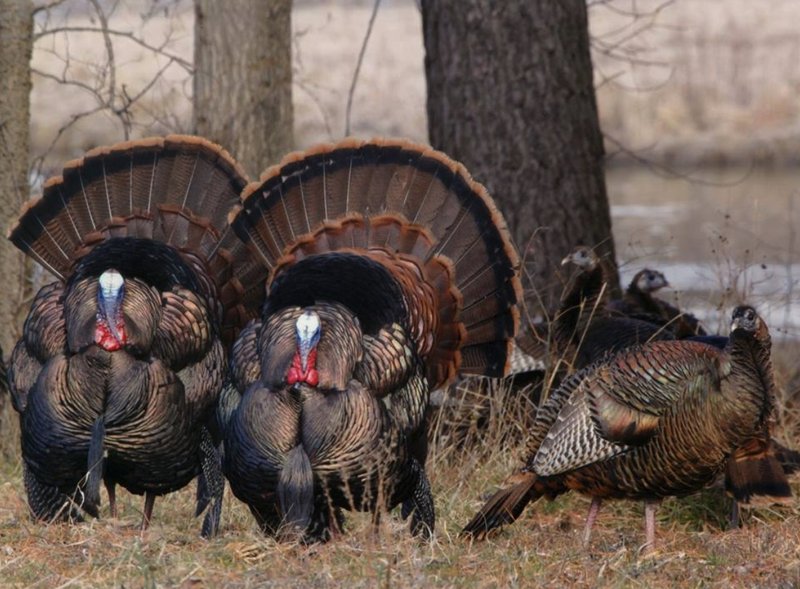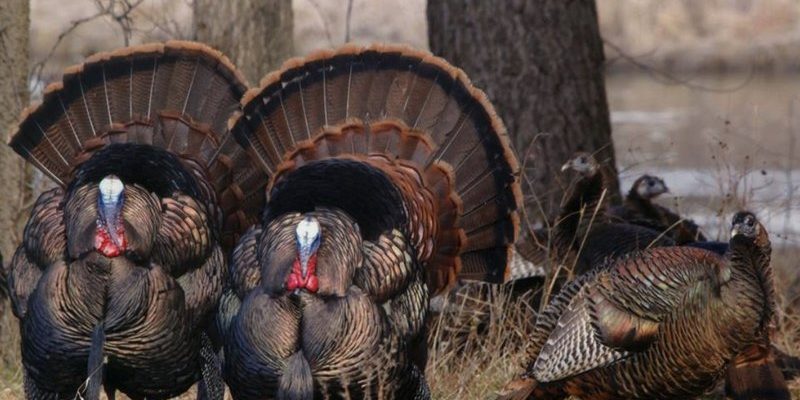
Here’s the thing: turkeys are not just ground-dwelling birds; they can soar up to 200 feet in the air! That’s pretty impressive for a bird that’s often associated with dinner tables. In this article, we’ll dive into how turkeys use their flying skills to hunt and evade predators, revealing the hidden layers of their behavior that make them so remarkable.
A Brief Overview of Turkey Species
Turkeys belong to the genus Meleagris and are primarily found in North America. There are two main species: the wild turkey and the domestic turkey. The wild turkey, which is more likely to be seen flapping its wings in the wild, is known for its adaptability and resourcefulness. It has a sleek, strong body designed for short bursts of speed and agile flying.
The domestic turkey, on the other hand, has been bred for size and is generally heavier, which limits its flying capabilities. While wild turkeys can fly short distances and roost in trees, domestic turkeys are often grounded, content to forage on the ground. This difference in species affects not only their flying abilities but also their hunting techniques and survival strategies.
How Turkeys Fly: Anatomy in Action
You might be curious about how something that looks so bulky can fly at all. Wild turkeys have powerful muscles attached to their large breastbones, allowing them to flap their wings with vigor. Their wingspan can reach up to four feet! This impressive anatomy enables them to take off quickly, often escaping danger in the blink of an eye.
Interestingly, turkeys don’t just fly for the sake of it. They typically soar to reach higher places where they can roost safely from predators at night. Picture them as nature’s acrobats, launching into the air to find refuge among the trees. Their strong, flexible wings are also key to maneuvering through dense forests and open fields, showcasing their dexterity.
Hunting Techniques: The Turkey’s Strategy
So, how do turkeys hunt for food? Unlike predators that stalk their prey, turkeys are foragers. They use their keen eyesight and excellent hearing to locate seeds, insects, and even small reptiles. When hunting for food, they often rely on a strategy called “scratching.”
This involves using their strong legs and feet to scratch the ground, uncovering hidden treats buried beneath the surface. You might think of it as a treasure hunt—each scratch brings them closer to a tasty reward. Combining this with their ability to fly allows them to explore different areas quickly and efficiently, increasing their chances of finding food.
The Role of Camouflage
One of the most impressive techniques turkeys use is camouflage. Their plumage—a mix of browns, blacks, and iridescent greens—allows them to blend seamlessly into their surroundings. This adaptation helps them hide from both predators and potential hunters. When they’re not flying high up in the trees, you might find them silently crouched among the leaves, waiting for the right moment to forage.
You might be wondering how this plays into their flying abilities. Well, when a turkey detects danger, it often relies on its camouflage first. If that’s not enough to scare off a predator, it takes to the skies. This two-step approach—hiding first, then flying—enhances their chances of survival and helps them navigate their environment effectively.
Predator Evasion: An Important Skill
Wild turkeys are frequently hunted by animals like coyotes, foxes, and hawks. Their flying ability is crucial for evading these predators. When sensing danger, turkeys can take off quickly, reaching speeds of up to 55 miles per hour in short bursts. Imagine being chased and having the ability to dart away in an instant—that’s what flying does for them!
But it’s not just speed that helps them escape. Turkeys are also incredibly smart. They often observe their surroundings and remember where danger might come from. If a predator is spotted, you might see a turkey take off into the sky, flying away from potential harm while keeping a keen eye on the ground below.
The Importance of Roosting
Roosting is another fascinating aspect of a turkey’s lifestyle. After a day of foraging and evading predators, turkeys will often seek high ground to sleep. They prefer roosting in trees, staying off the ground where they feel safer from nocturnal threats.
This behavior highlights the significance of their flying abilities, allowing them to reach sheltered spots that are difficult for predators to access. Imagine climbing a tree to find a cozy spot away from the dangers lurking below—this is what turkeys do every night.
The Impact of Environment on Hunting Techniques
The environment where turkeys live greatly influences their flying and hunting techniques. In wooded areas, they tend to forage and roost among the trees, using their flying skills to navigate the dense foliage. On the other hand, in open fields, turkeys might rely more on their ground-scratching techniques, using their keen eyesight to spot food from afar.
Weather also plays a role. During harsh winters, turkeys might adapt their behavior, searching for food more actively during the day when temperatures are warmer. They have to be resourceful, and their flying ability allows them to cover more ground in their quest for sustenance, whether it’s a sunny day or a chilly evening.
Turkeys are truly remarkable birds with unique flying and hunting techniques that reflect their adaptability and intelligence. From their powerful flights to their clever foraging methods, they are more than just a holiday dinner. Observing their behaviors reveals a sophisticated approach to survival in the wild.
Next time you see a turkey, take a moment to appreciate all they do—from soaring through the sky to scratching the earth for food. These fascinating creatures remind us that there’s always more to discover in the world of nature. So, whether you’re an enthusiast or just curious, the turkey’s flight and hunting tactics offer a captivating glimpse into their lives.

